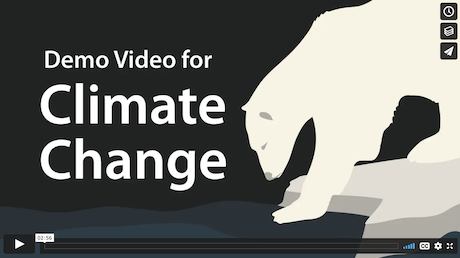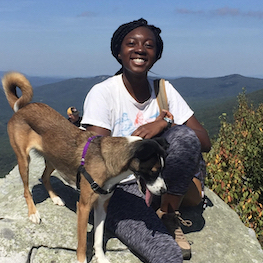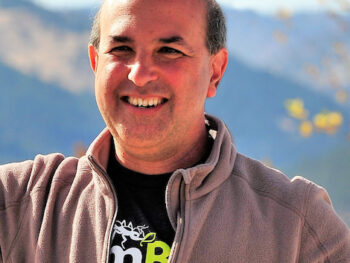Teachable Moments Series

Over the past decade, I’ve seen dramatic shifts in how college students in my courses view the evidence for climate change. Much of the skepticism I saw in 2011 is gone. Most of my current students acknowledge the reality of climate change and our role in driving it. Nevertheless, they often feel ill-equipped in conversations with climate contrarians who cite what they consider to be evidence for their dismissal of climate change and the role humanity plays in affecting the environment.
My perceptions of changing attitudes mirror those documented by the Yale Program on Climate Change Communication, a group that has been surveying Americans about climate change for longer than I’ve been teaching. Their data shows that skepticism about climate change was at a high in 2010. Since then, people increasingly accept it as a reality. Nevertheless, less than 40% of adults regularly discuss global warming. What’s more, like many things in America, opinions often shake down along party lines.
— Dr. Katharine Hayoe
Dr. John Cook is a cognitive scientist at Mosach University in Australia. He founded the excellent website on climate misinformation, Skeptical Science, and has extensively researched how to combat misinformation. Two of his papers are particularly useful when trying to help improve students’ ability to communicate about climate change. A 2017 paper in PLoS One shows how exposing people to the way in which misleading arguments are constructed can help inoculate them against their effects. Basically, people don’t like it when folks try to deceive them. Dr. Cook and colleagues show that by helping people understand how misleading arguments are constructed, you can teach them to identify deceptive arguments for themselves. The second article in Environmental Research Letters the following year builds on this idea by formally breaking down poor arguments. However, this is not why I love it. I love it because it includes a silly video abstract in which the authors illustrate how to break down the poor reasoning in faulty arguments—a video that is a lot of fun to show to students.
Dr. Katharine Hayhoe, an atmospheric scientist working for The Nature Conservancy while moonlighting for the Department of Political Science at Texas Tech University (among other things), advocates for a parallel approach. She is unusual in the science community in that she is as outspoken about her faith as she is about the reality of climate change. Not surprisingly, this has led her to chart a slightly different climate communication path than that of Dr. Cook. Dr. Hayhoe strongly advocates beginning discussions about climate change—or any topic, really—by looking for examples of shared values. She did a beautiful job laying out her approach in a TED talk she delivered in 2018 and has since built on this with a her YouTube video series called Global Weirding. One of her key points is that people already care about climate change, they just don’t realize it because they haven’t made the link between weird weather and greenhouse gases.
All of this brings me back to my students. When I’m illustrating the importance of climate change, I want examples that they can use to talk with climate contrarians — examples that will resonate with people who may not care much about polar bears and melting ice in the Arctic. For example, climate change has driven an increase in the duration and intensity of the wildfire season across the western U.S. which is dramatically impacting public health. Wildfires are exposing westerners to lots and lots and lots of smoke! As a resident of Missoula, MT, I can attest to how bad smoke season can be. Recent research suggests that the west has become so smokey, that many of the improvements in air quality stemming from reduced point source emissions and cleaner cars have been lost. What’s more, there is an environmental justice aspect to this story with low-income outdoor workers disproportionally exposed to the effects of smoke. For many, the widespread nature of wildfire smoke brings home how climate change is already impacting the people they know and love, making it more likely that they will accept the science and try to find a solution.
This last bit is important, especially when talking to students. People need hope. After all, as Dr. Hayoe noted in a recent interview, “Fear is useful to wake us up and make us pay attention, but if we don’t know what to do, it paralyzes us.” Whenever she talks about climate change she makes sure to point out the genuine progress we have already made. She emphasizes that before 2015 we were on track for a 4 degree Celsius increase in the mean global temperature by 2100, but today that number is only 3 degrees. And, with a bit of effort, we may yet hold it to 2 degrees. This is encouraging. What’s more, as she also frequently points out, the only true path to hope is through action. Since every choice matters, the idea that doing what we can is powerful. If we all strive to be a bit better, we really can change the world…this is something our students need to hear!







 A Systems Thinking Framework for Biology Classes
A Systems Thinking Framework for Biology Classes

